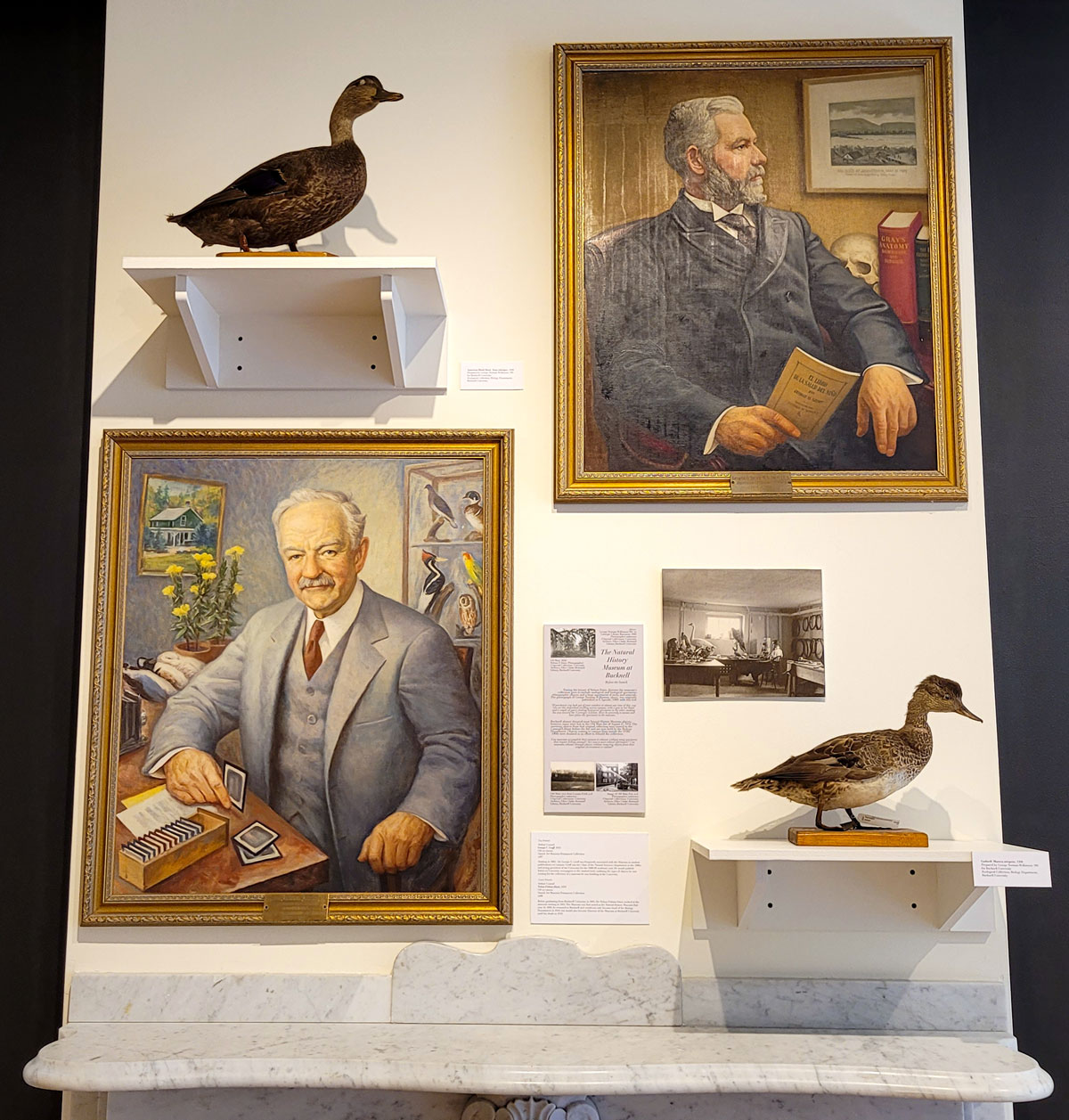Ethics and Origins in Bucknell’s Collections
There’s a human skull in Bucknell’s collections. For the last year, Samek Fellow Sarah Hixson has been working to develop an understanding of what to do with it.
Hixson curated the Samek Downtown Gallery’s spring show, Memento: Museums & Their Dealings With The Dead, as an examination of the ethics of museum collections, including Bucknell’s own. “Museum professionals today inherit these collections and their ethical consequences,” her research reads. “Repatriation work provides current and future museum workers with the space to acknowledge the ethnocentric and colonial histories of our institutions and work on establishing better, more ethical ways of engaging with the public and growing our collections.”
“Some of my very first research of the fellowship involved trying to figure out where the skull came from and why it’s here in the first place,” Hixson says.

In 2018, as the University worked to refine inventory and collections records, the staff came across the cranium in a cardboard box. Hixson has discovered that it was gifted to Professor Nelson Davis in 1935 by the first Bucknell biology graduate, Gilbert S. Perez, Class of 1907.
Davis, serving as the head of the biology department, had curated the University’s first Natural History Museum, which was housed in Old Main. When the building burned in 1932, the collection was lost. In his effort to rebuild, Davis solicited donations from alumni, students, families and the community.
His request resulted in an outpouring of art and artifacts without record of their origins.
“The main question we now must ask of the items in our current collection is ‘Did they come ethically?’ ” says Hixson. “We’re figuring out what potentially needs to be repatriated and working on getting those things back to where they need to be.”
Hixson’s curatorial text pinpoints the importance of intentional examination: “The stories that hide in museum collections are often found in the dark. They whisper secrets from locked cabinets and storage boxes of death, human history, the rising and falling of empires, genocidal atrocities, and social and political upheaval. Academic museums are not excluded from this pattern of collecting. Human remains, culturally sensitive and sacred objects and more are mined and excavated from graves and ruins from around the globe. Collected in the name of science and the humanities, these objects help us to better understand other cultures and genetic histories. However, when objects are taken under duress or illegally, the dead are exploited for something or someone else’s gain.”